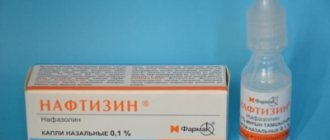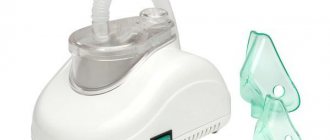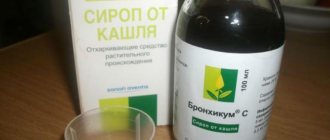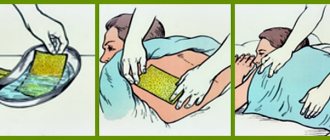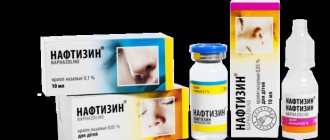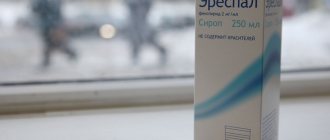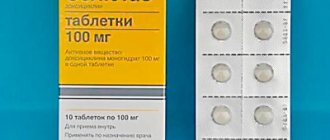Anaferon is a homeopathic drug that is widely used in the treatment of acute respiratory pathologies and some other diseases. A special feature of the drugs in this group is the fact that the active components are in minimal concentrations.
As for Anaferon, its action is based on the effect on the body of purified antibodies to human interferon, which are active against a large number of viral pathogens. Each patient needs to know the list of indications and contraindications of the drug, possible negative reactions that may occur while taking it.
The difference between a children's drug and an adult's
It is necessary to have an idea of how Anaferon for children differs from an adult. First of all, the price for this form of the drug is slightly lower. There is also a difference in the dilutions of the active substances - for children the concentrations are slightly lower . Other differences:
- Number of tablets in the package - for children there are packs of 20 and 40 forms, for adults - only 20.
- For young patients (under 3 years old), it is recommended to crush the tablet and dissolve it in a tablespoon of boiled water.
- There is a difference in treatment and prophylactic regimens. More about this below, the main feature is the duration of administration.
As you can see, there are small points that determine the tactics of using the drug. It is important for every doctor and patient to pay attention to them in order to determine the correct treatment regimen for diseases.
Anaferon's analogues
There are no structural analogues of the drug. There are drugs on the pharmaceutical market with similar pharmacological effects, but with different active ingredients. Such drugs include Arbidol, Viferon, Aflubin, Immunal and Kagocel. However, Anaferon is better tolerated and has fewer negative side effects, and also does not contain ethanol and therefore can be prescribed to the youngest patients.
There are Anaferon analogues that have antimutagenic properties and contain the main component that affects the interferon system. Such drugs are prescribed for the treatment of acute respiratory viral infections or infectious diseases. Doctors recommend taking the following analogues of Anaferon as a preventive course:
- Ergoferon;
- Aflubin;
- Viferon;
- Arbidol.
Ergoferon has an immunomodulatory effect and has antiviral properties. It contains antibodies to interferon gamma of the human body, which enter viral cells and destroy them. The medicinal product does not affect the control of transport or dangerous mechanisms. It is accepted for:
- prevention of bacterial complications after viral infections;
- for the treatment of acute intestinal infections (coronavirus, adenovirus or rotavirus);
- for the treatment of acute respiratory viral infections.
As with Anaferon for children, there are certain side effects and contraindications that coincide with the previous drug. The next analogue is Aflubin. It has antipyretic, anti-inflammatory, detoxification, analgesic and immunomodulatory properties. It is used to treat infections and relieve flu or cold symptoms. The drug has a side effect - increased salivation. Accepted at any age.
Viferon has an immunomodulatory, antiviral effect. The drug is used to treat colds, acute respiratory viral infections, influenza and other diseases. When used, side effects such as skin itching or allergies are possible. The drug improves immunity in the treatment of various diseases caused by viruses and infections. It can be used in childhood.
Arbidol is an antiviral drug that improves the patient's humoral immunity in the treatment of colds, ARVI and flu. Children under 3 years of age should not take this product. The drug can be used to prevent or treat diseases. No overdoses or side effects were observed, but it affects the ability to drive.
Is it possible to give a child Anaferon for adults?
Is it possible to give a child adult Anaferon? It is recommended to adhere to the following rule: give children the appropriate form of the drug.
In extreme cases (for example, it is impossible to purchase the children's version of Anaferon), you can take a tablet for adults, which must first be crushed and dissolved in a tablespoon of water. For patients aged six months to 3 years, half a tablet should be given.
It is also important to know up to what age Anaferon for children can be used. It can be used up to 12 years of age. From this age you can take the dosage form for adults.
Contraindications and storage conditions
The medicine is not recommended for use in cases of intolerance to individual components of Anaferon. Use with caution during pregnancy and lactation. Should not be taken if you have a history of autoimmune diseases.
Due to the fact that the drug contains lactose, it is contraindicated for use in patients who suffer from galactosemia, impaired glucose absorption, or have insufficient lactase secretion. What other contraindications does anaferon have? This is pregnancy and lactation. These conditions are contraindications only for precautionary purposes, because studies on pregnant or lactating women have not yet been conducted.
It is necessary to carefully monitor your health, especially when taking the drug for the first time, because anaferon can sometimes cause side effects. They are represented by various allergic reactions, this can be either urticaria or rash, or Quincke's edema. Their development is due to intolerance to the components of the drug that are included in its composition. If any negative effects occur, stop taking the medicine and seek medical attention.
Although Anaferon is a tablet, even they quickly degrade and lose their effect if stored improperly. The optimal place to hide the medicine is a dry, dark place with a temperature of up to 25ºC; it should not be accessible to children. The drug is valid for three years.
Remember that the key to effective and correct use of the drug is a carefully studied summary.
| Lozenges | 1 table |
| antibodies to human interferon gamma, affinity purified (applied to lactose monohydrate in the form of a water-alcohol mixture containing no more than 10−15 ng/g of the active form of the active substance) | 0.003 g |
| excipients: lactose monohydrate - 0.267 g; MCC - 0.03 g; magnesium stearate - 0.003 g |
prevention and treatment of acute respiratory viral infections (including influenza);
complex therapy of infections caused by herpes viruses (infectious mononucleosis, chicken pox, labial herpes, genital herpes);
complex therapy and prevention of relapses of chronic herpesvirus infection, incl. labial and genital herpes;
complex therapy and prevention of other acute and chronic viral infections caused by tick-borne encephalitis virus, enterovirus, rotavirus, coronavirus, calicivirus;
use as part of complex therapy of bacterial infections;
complex therapy of secondary immunodeficiency states of various etiologies, incl. prevention and treatment of complications of viral and bacterial infections.
Increased individual sensitivity to the components of the drug. Children and persons under 18 years of age are advised to use the drug Anaferon for Children.
The safety of Anaferon in pregnant women and during lactation has not been studied. If it is necessary to take the drug, the risk/benefit ratio should be taken into account.
At a temperature not exceeding 25 °C.
Keep out of the reach of children.
3 years.
Do not use after the expiration date stated on the package.
Compound
The compositions of both types of medicine are practically no different. The main difference is in the concentration of antibody dilutions, which are the active component of the product.
Adult
The form of the drug intended for the treatment of adults includes antibodies to human immunoglobulin purified in a special way in an amount of 3 mg . There are also additional substances - calcium and magnesium stearate, lactose, cellulose in the form of microcrystals.
Children's
The composition of children's Anaferon is as follows: active substance in the amount of 0.003 g . In addition to antibodies to human interferon, the drug contains auxiliary components - magnesium stearate, cellulose in the form of microcrystals, lactose.
Release form and composition
Anaferon for adults is available in the form of sublingual tablets, packaged in blister packs of 20 pieces.
Children's Anaferon is also sold in the form of lozenges in packages of 20 or 40 pieces. The active ingredient of the drug is affinity-purified antibodies to human interferon gamma. Excipients of the drug: lactose, magnesium stearate and microcrystalline cellulose.
The tablets have a flat-cylindrical shape, the color is white or almost white, the inscription MATERIA MEDICA is clearly visible on the scored side, and the engraving ANAFERON is clearly visible on the other side.
Lozenges are flat-cylindrical in shape, scored and chamfered, from white to almost white in color.
On the flat side with a notch there is the inscription “MATERIA MEDICA”, on the other flat side - “ANAFERON”.
Lozenges. 20 tablets each in blister packs made of PVC film and aluminum foil. 1, 2 or 5 blister packs are placed in a cardboard pack.
Instructions for use
The instructions for using Anaferon are quite simple, but there are certain features in the treatment and prevention of herpetic infections. In any case, each patient needs to have an understanding of the dosage features of the drug and adhere to all recommendations, which will ensure a successful recovery.
It is important to note that in situations where improvement does not occur within 3 days, it is necessary to change treatment tactics.
Adult
Anaferon tablets are prescribed for the prevention and treatment of acute respiratory infections caused by viruses in the form of rhinitis, pharyngitis, sinusitis, tracheitis and bronchitis. Other indications:
- Secondary immunodeficiencies.
- Anaferon can be used to prevent the development of bacterial infections.
- The drug is suitable for the treatment of influenza and herpetic lesions, including genital herpes.
How to take adult Anaferon? You should start taking the drug at the first symptoms of a cold. The regimen for taking Anaferon is to take 1 tablet every 30 minutes for 2 hours, then 3 tablets at regular intervals for 24 hours. After this, patients take 3 tablets per day until recovery occurs.
For herpetic infections, Anaferon is taken 1 tablet 8 times a day for 3 days, from 4 to 5 days of treatment - 1 tablet 7 times a day, from 6 to 7 - 6 times a day, from 8 to 9 - 5 times a day , from 10 to 11 - four times, from 12 to 21 - three times a day.
The drug is not prescribed to patients with hyperreactivity reactions to its components, during pregnancy and breastfeeding. Anaferon is usually well tolerated. Among the adverse reactions, only cases of allergies were recorded.
Children's
Anaferon for children is used to prevent the development and treatment of acute respiratory diseases of the upper respiratory tract of viral etiology, including influenza and herpes. The drug is also prescribed for various immunodeficiency conditions. Children's Anaferon is prescribed for chickenpox as part of a complex treatment.
It is recommended to start taking the drug when the first signs of an acute respiratory infection occur. Patients need to take 1 tablet every half hour for 2 hours. Then take 3 tablets per 24 hours, the intervals between doses should be equal.
After this period of time has passed, switch to the following regimen: 1 tablet three times a day until recovery occurs.
The drug is taken half an hour before or after a meal. Children's Anaferon is not used to treat patients under 6 months of age.
As for children under 3 years of age, they are not given whole tablets; the medicine is first crushed or dissolved in a tablespoon of water.
Anaferon is contraindicated in the presence of hyperreactivity reactions to its components. As for possible adverse reactions, in addition to allergies (usually in the form of skin rashes), various dyspeptic phenomena can be diagnosed - nausea, vomiting, lack of appetite, abdominal pain, diarrhea, constipation, increased gas formation. In such situations, Anaferon is discontinued and should be replaced with other antiviral drugs.
Indications for use
Anaferon is effective against many viruses, but best of all it destroys the causative agents of influenza and colds. The drug is prescribed as a preventive or additional therapeutic agent; the pediatric form of the drug can be used for infants who are one month old.
What does Anaferon help with:
- flu and colds;
- diseases of the respiratory system and reproductive system of viral origin;
- exacerbation of the herpes virus;
- chickenpox;
- mononucleosis;
- rotavirus, enterovirus, mixed infections;
- immunodeficiency states.
Anaferon helps in the treatment of influenza
When Anaferon is taken simultaneously with antipyretic and anti-inflammatory drugs, a runny nose, cough, and general weakness quickly disappear. Combined use allows you to reduce the dose of aggressive drugs.
How to use for prevention
For preventive purposes, it is recommended to take 1 tablet orally per day for 1 to 3 months (depending on the duration of the epidemic). For adult patients, the drug can be prescribed to prevent the development of herpetic infections. In such situations, the following dosage of the drug is taken - 1 tablet every other day for six months.
Instructions for use for the prevention of children's Anaferon are almost identical. It is recommended to dissolve 1 tablet once a day during the epidemic period. The total duration of treatment should not exceed 3 months.
pharmachologic effect
| Category ICD-10 | Synonyms of diseases according to ICD-10 |
| A49.9 Bacterial infection, unspecified | Anaerobic bacterial infection |
| Bacterial superinfection | |
| Severe bacterial infections | |
| Nosocomial infections | |
| Secondary bacterial infections | |
| Gram-negative aerobic pathogen | |
| Infections in surgery | |
| Infections in immunocompromised patients | |
| Acute bacterial infection | |
| Postinfectious glomerulonephritis | |
| Chronic bacterial infection | |
| Chronic bacterial infections | |
| A60 Anogenital herpetic viral infection | Herpes simplex genitalis |
| Banal recurrent genital herpes | |
| Secondary genital herpes | |
| Genital herpes virus infection | |
| Genital herpetic infections | |
| Genital herpes | |
| Herpes genitals | |
| Herpes genital | |
| Herpes of lips and genitals | |
| Genital herpes | |
| Herpetic lesions of the mucous membranes of the genitourinary organs | |
| Herpetic lesions of the genitals | |
| Primary genital herpes | |
| Primary genital herpes | |
| Herpes simplex extragenital and genital localization | |
| Recurrent genital herpes | |
| Recurrent genital herpes | |
| A84 Tick-borne viral encephalitis | Tick-borne encephalitis |
| Tick-borne encephalitis | |
| B00 Herpes simplex virus infections | Herpes simplex |
| Herpes virus | |
| Herpes simplex virus | |
| Herpes simplex virus types I and II | |
| HSV | |
| Herpes | |
| Herpes /herpes simplex/ | |
| Herpes lips | |
| Herpes simplex | |
| Herpes simplex | |
| Herpes in patients with immunodeficiency | |
| Herpes viral infections of various localizations | |
| Labial herpes | |
| Acute herpetic disease of the mucous membranes | |
| Herpes simplex | |
| Herpes simplex of the skin and mucous membranes | |
| Herpes simplex affecting the skin and mucous membranes | |
| Recurrent herpes | |
| Urogenital herpetic infection | |
| Chronic recurrent herpes virus infection | |
| B00.9 Herpetic infection, unspecified | Facial herpes |
| Herpes on mucous membranes | |
| Herpes viral infections | |
| Herpes viral infections of various localizations | |
| Herpetic infection | |
| Herpetic infections | |
| Herpetic lesions | |
| Latent herpetic infection | |
| Neonatal herpes | |
| Acute herpetic disease of the mucous membranes | |
| Recurrent herpetic infection | |
| Recurrent herpes | |
| Chronic recurrent herpes virus infection | |
| Chronic recurrent herpes infection | |
| B01 Chicken pox [varicella] | Herpes Varicella zoster |
| Varicella Zoster | |
| Chicken pox | |
| Chickenpox of a newborn | |
| Chicken pox | |
| B27 Infectious mononucleosis | Adenosis multiglandular |
| Sore throat lymphoid cell | |
| Sore throat monocytic | |
| Pfeiffer's disease | |
| Turk's disease | |
| Filatov's disease | |
| Pfeiffer's glandular fever | |
| Lymphoblastosis benign acute | |
| Lymphomononucleosis infectious | |
| Glandular fever | |
| Idiopathic glandular fever | |
| Monocytic tonsillitis | |
| Complications of infectious mononucleosis | |
| B34 Viral infection of unspecified localization | Viral infection |
| Viral infections | |
| Viral respiratory tract infections | |
| Viral infections | |
| D84.8 Other specified immunodeficiency disorders | Secondary immune deficiency |
| Secondary immunodeficiency state | |
| Secondary immunodeficiency conditions | |
| Secondary immunodeficiencies | |
| Secondary immunodeficiency | |
| Immunodeficiency caused by protein loss | |
| Secondary immunodeficiency conditions | |
| Primary immunodeficiency conditions | |
| Immunodeficiency states due to protein loss | |
| Acquired immunodeficiency | |
| Secondary immunodeficiency syndrome | |
| J06 Acute upper respiratory tract infections of multiple and unspecified localization | Bacterial infections of the upper respiratory tract |
| Bacterial respiratory infections | |
| Pain due to colds | |
| Pain in infectious and inflammatory diseases of the upper respiratory tract | |
| Viral respiratory disease | |
| Viral respiratory tract infections | |
| Inflammatory disease of the upper respiratory tract | |
| Inflammatory diseases of the upper respiratory tract | |
| Inflammatory diseases of the upper respiratory tract with difficult to separate sputum | |
| Inflammatory diseases of the respiratory tract | |
| Secondary infections with influenza | |
| Secondary infections due to colds | |
| Influenza conditions | |
| Difficulty secreting sputum in acute and chronic respiratory diseases | |
| Upper respiratory tract infections | |
| Upper respiratory tract infections | |
| Respiratory tract infections | |
| Respiratory and lung infections | |
| ENT infections | |
| Infectious and inflammatory diseases of the upper respiratory tract | |
| Infectious and inflammatory diseases of the upper respiratory tract and ENT organs | |
| Infectious and inflammatory diseases of the upper respiratory tract in adults and children | |
| Infectious and inflammatory diseases of the upper respiratory tract | |
| Infectious inflammation of the respiratory tract | |
| Respiratory tract infection | |
| Qatar of the upper respiratory tract | |
| Catarrhal inflammation of the upper respiratory tract | |
| Catarrhal disease of the upper respiratory tract | |
| Catarrhal phenomena from the upper respiratory tract | |
| Cough in diseases of the upper respiratory tract | |
| Cough with a cold | |
| Fever due to influenza | |
| ARVI | |
| acute respiratory infections | |
| Acute respiratory infection with symptoms of rhinitis | |
| Acute respiratory infection | |
| Acute infectious-inflammatory disease of the upper respiratory tract | |
| Acute cold | |
| Acute respiratory disease | |
| Acute respiratory disease of influenza nature | |
| Sore throat or nose | |
| Cold | |
| Colds | |
| Colds | |
| Respiratory infection | |
| Respiratory viral infections | |
| Respiratory diseases | |
| Respiratory infections | |
| Recurrent respiratory tract infections | |
| Seasonal colds | |
| Seasonal colds | |
| Frequent colds and viral diseases | |
| J11 Influenza, virus not identified | Flu pain |
| Flu | |
| Flu in the initial stages of the disease | |
| Flu in children | |
| Influenza condition | |
| Influenza | |
| Beginning flu state | |
| Acute parainfluenza disease | |
| Parainfluenza | |
| Parainfluenza condition | |
| Influenza epidemics |
Side effects of Anaferon
Allergic reactions and manifestations of increased individual sensitivity to the components of the drug are possible.
The drug is very well accepted by the body and rarely causes side effects. In very rare cases, minor allergic reactions may occur.
When using Anaferon according to indications and in recommended dosages, no side effects were identified. Sometimes hypersensitivity reactions to the components of the drug occur.
